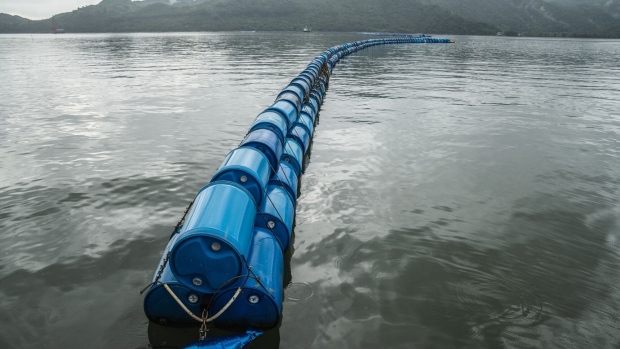Mar 29, 2023
Mysterious Solar Panels Found Drifting in the Sea Near Hong Kong Airport
, Bloomberg News

(Bloomberg) -- Paddlers in Hong Kong more used to catching a glimpse of marine life are being confronted with an unusual sight instead — an abandoned group of solar panels of unknown origin floating in the sea.
The large solar panel structures, which has bewildered authorities and onlookers alike, were found in mid-March in Sha Chau and Lung Kwu Chau Marine Park, according to a spokesperson for the city’s Agriculture, Fisheries and Conservation Department.
The island is a protected natural area for recreation and other purposes to the north of Hong Kong International Airport. Large items of waste including bamboo poles often flow into the park and accumulate there due to various factors like the weather and currents, according to the department.
It’s liaised with another government agency in efforts to identify the panels’ source, including posting a notice. “No relevant information has been received so far,” the department said, adding arrangements are being made for a contractor to remove the panels this week.
Hong Kong, a densely populated city and one of the busiest container ports in the world, has long struggled with rubbish polluting its waters despite threatening offenders with fines and jail time. More than 14,000 tons (31 million pounds) of predominantly plastic marine waste was collected annually in the years before the pandemic, according to government data.
Most solar panels end up in landfills after their typical three-decade lifespans end, with most territories including Hong Kong not requiring them to be recycled. BloombergNEF estimates that solar panel waste will surge to around 10 million tons globally by 2050 from 18,000 tons (36 million pounds) points in 2019 as their use increases. But they will still be a fraction of other waste types generated annually, like electronics.
©2023 Bloomberg L.P.


